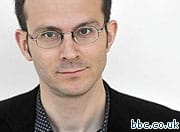New official statistics showing the small numbers of homosexuals in the UK have been met with disbelief and scepticism from some, so just how accurate are the findings?
Listen to a report of the stats
The findings were published two weeks ago by the Office for National Statistics (ONS). They showed that just one per cent of the population say they are homosexual (gay or lesbian) and another 0.5 claim to be bisexual.
The numbers hit the headlines because previous Government estimates had put the figure somewhere in the region of five to seven per cent – with some even claiming the figure to be as high as ten per cent.
Stranger
Those who believed the higher figures said the ONS numbers must be wrong. An article on the Observer website suggested that homosexuals and bisexuals may have been reluctant to reveal their sexuality to a stranger with a clipboard.
But that’s not how the research was actually carried out.
The ONS has revealed that they spent three years perfecting the way in which the question was worded to ensure that they got the most accurate result.
In addition all of the respondents had agreed to take part in the survey and knew the nature of the questions they would face beforehand.
Agreed
Significantly all of the respondents were able to disclose their sexuality without anyone else knowing what their answer was.
Not all of the 450,000 people surveyed were asked about their sexuality as some of them were too young. In total 247,623 people were asked about their sexuality and 238,206 gave a valid response.
Each member of a household was interviewed on their own using a series of question cards, and during questioning each respondent was asked a series of questions on a number of different issues.
Sexuality
All of those asked about their sexuality were asked exactly the same question, but shown a different card with a unique reference number next to each of the preferences.
This system allowed people to identify their sexuality without having to worry about their friends or relatives finding out.
Perfecting
Speaking on the BBC’s More or Less programme Stephen Hicks, of the Office for National Statistics, defended the figures.
Mr Hicks said: “The estimate we’ve produced and published last week is in line with other surveys that ask similar questions in the UK and also in line with the pilot surveys that we carried out between 2006 and 2008.
Accurate
“So we’re quite confident that the estimate we have is an accurate estimate of self perceived sexual identity.”
During its time in office the former Labour Government endorsed figures produced by a homosexual campaign group which claimed that between five and seven per cent of the population were homosexual.
And many others have repeated Professor Alfred Kinsey’s claim that this figure stands as high as ten per cent.
Homosexual
Prof Kinsey interviewed thousands of men and women in the United States between 1938 and 1952 and claimed that 13 per cent of the men, and 7 per cent of the women were “almost exclusively” homosexual.
However, his methods have subsequently been cast into doubt.
Professor Julia Ericksen, from Temple University in America, warned that Prof Kinsey’s methods could not be used to derive an indication as to the behaviour of the population as a whole.
Antagonistic
Prof Ericksen cautioned: “He didn’t believe in survey sampling and he was quite antagonistic towards it.”
Last month’s figures from the Office for National Statistics showed that just one adult in 100 are homosexuals.
These new figures cast doubt on the amount of public money being lavished on the homosexual agenda.
Higher
Mike Judge, Head of Communications at The Christian Institute, said: “A large amount of public money has been spent on the basis of higher figures, which have turned out to be a lie.”
And Philip Davies MP said: “An awful lot of focus in diversity issues is given to people’s sexual preference and this difference is not as widespread as believed.”

